The Golden Buddha, officially titled Phra Phuttha Maha Suwanna Patimakon, is a magnificent gold Maravijaya Attitude seated Buddharupa statue located in the temple of Wat Traimit in Bangkok, Thailand. Weighing an impressive 5.5 tonnes (5,500 kilograms), this statue remained hidden for almost 200 years, covered with a layer of stucco and colored glass to conceal its true value. During relocation in 1955, the plaster was chipped off, revealing the solid gold beneath. The origins of this statue are uncertain, but it is made in the Sukhothai Dynasty style of the 13th–14th centuries. The head of the statue’s egg-shaped form indicates its Sukhothai period origin. The statue’s fascinating history includes being moved from Sukhothai to Ayutthaya around 1403 and later being completely plastered over to prevent theft. It eventually found its way to Wat Traimit, where it now stands as a remarkable testament to Thai art and culture. If you plan to visit, here are some insider tips and practical insights for an unforgettable experience at this iconic Thai temple
Wat Traimit (Temple of Golden Buddha)
Wat Traimit (Temple of Golden Buddha) location
The temple is situated in the heart of Chinatown, just a short walk from Hualamphong railway station. You’ll find it at 661 Charoenkrung Road, which is at the end of Yaowarat Road
Opening Hours & Entrance Fee
- Opening Hours:
- The temple is open daily from 8:00 am until 5:00 pm.
- The Golden Buddha image can be viewed during the same hours every day.
- Entrance Fee:
- For the museum entrance, the fee is 100 Baht per person.
- To view the Buddha image, there is an additional fee of 40 Baht per person.
How to get to Wat Traimit (Temple of Golden Buddha)
- By Bus:
- Take the SkyTrain (BTS) from Asoke Station to Saphan Taksin Station (SILOM Line).
- From Saphan Taksin Station, walk to the nearby Sathorn Pier.
- Board the Chao Phraya Express Boat (blue flag) and get off at Ratchawong Pier.
- From Ratchawong Pier, it’s a short walk to Wat Traimit in Chinatown.
- By Metro (MRT):
- Take the Blue Line (MRT) from Asoke Station to Hua Lamphong Station.
- Exit the station and walk approximately 500 meters to Wat Traimit.
- By Train:
- If you’re coming from outside Bangkok, take a train to Hua Lamphong Railway Station.
- From Hua Lamphong, it’s a 135-minute journey by train to Bangkok’s Chinatown.
- Once you arrive at Hua Lamphong, follow the directions to Wat Traimit.
- By SkyTrain (BTS):
- Take the SkyTrain (BTS) from Asoke Station to Mo Chit Station (Sukhumvit Line).
- Transfer to the MRT (Blue Line) at Mo Chit Station.
- Take the Blue Line to Hua Lamphong Station.
- Exit the station and walk to Wat Traimit.
History of Wat Traimit (Temple of Golden Buddha)
Discovery of the Golden Buddha
The story begins with the discovery of the Golden Buddha, a solid gold statue that remained hidden for nearly 200 years. Covered in a layer of stucco and colored glass, it was initially thought to be an ordinary plaster statue.
In 1955, during the relocation of the statue to its current location at Wat Traimit, workers accidentally chipped off some plaster, revealing the dazzling gold beneath. The revelation stunned the world.
Origins and Style
The origins of the Golden Buddha are shrouded in mystery. Scholars believe it was crafted during the Sukhothai Dynasty (13th–14th centuries) due to its distinctive egg-shaped head, characteristic of Sukhothai art.
The statue’s serene expression and graceful posture exemplify the Maravijaya Attitude, symbolizing victory over worldly desires.
Journey from Sukhothai to Ayutthaya
Historical records suggest that the statue was moved from Sukhothai to Ayutthaya around 1403. Ayutthaya was the capital of the Siamese kingdom at the time.
The Golden Buddha likely graced a temple in Ayutthaya until the city fell to the Burmese in 1767.
Plastering to Prevent Theft
Fearing theft during turbulent times, the statue was completely plastered over. It remained among the ruins of Ayutthaya without attracting much attention.
In 1801, King Buddha Yodfa Chulaloke (Rama I) ordered the relocation of various old Buddha images to Bangkok from ruined temples across the country. The Golden Buddha was among them.
Wat Traimit: Present Home
During King Rama III’s reign, the statue found its place as the principal Buddha image in the main temple building of Wat Chotanaram in Bangkok.
When Wat Chotanaram fell into disrepair, the Golden Buddha was moved to its present location at Wat Traimit in 1935.
Today, the temple stands as a testament to Thai art, culture, and spirituality, drawing visitors from around the globe.
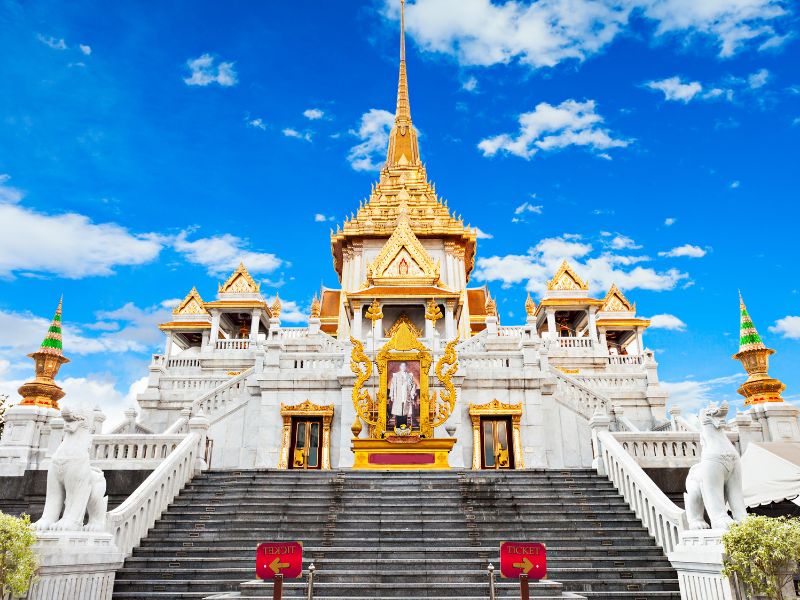
Unveiling the Golden Mystery: The Miraculous Story of Wat Traimit’s Solid Gold Buddha
The Golden Buddha’s Hidden Journey
The origins of this statue remain uncertain. It is made in the Sukhothai Dynasty style of the 13th–14th centuries, though it could have been created later.
The head of the statue, with its distinctive egg-shaped form, points to its Sukhothai period origin. Sukothai art, influenced by Indian aesthetics, produced metal Buddha figures that were disseminated across various countries during the Pala period.
The statue’s journey likely began in Sukhothai, then moved to Ayutthaya around 1403. Some scholars even associate it with the somewhat controversial Ram Khamhaeng stele.
The Unveiling of True Value
Covered with a thick layer of stucco, painted, and inlaid with bits of colored glass, the Golden Buddha remained inconspicuous.
It is believed that this plastering-over occurred before the Burmese invasion that led to the destruction of Ayutthaya in 1767.
In 1801, King Buddha Yodfa Chulaloke (Rama I) of Siam ordered the relocation of various old Buddha images to Bangkok from ruined temples across the country.
The statue found its way to Wat Chotanaram in Bangkok during King Rama III’s reign. Still covered with stucco, it became the principal Buddha image there.
A Miraculous Revelation
At the time, Wat Traimit was a pagoda of minor significance, lacking a building large enough to house the statue. It remained under a simple tin roof for 20 years.
The moment the plaster was chipped away, the Golden Buddha’s true splendor was revealed—a testament to faith, history, and the enduring spirit of Thai culture.
Main attractions of Wat Traimit (Temple of Golden Buddha)
The Golden Buddha (Phra Phuttha Maha Suwanna Patimakon)
Description: The temple’s crowning jewel is the awe-inspiring Golden Buddha statue. Standing 3 meters (9.8 feet) tall and weighing a staggering 5.5 tonnes (11,000 pounds), this solid-gold masterpiece gleams like a beacon of serenity. Sculpted in the graceful Sukhothai style, it exudes timeless elegance.
Discovery: The Golden Buddha’s fascinating history includes a dramatic revelation. Approximately 65 years ago, while being moved within the temple compound, the statue fell from a crane, revealing its true nature beneath a stucco and plaster exterior. Speculation abounds about why it was covered—some believe it was to protect it from marauding Burmese invaders during a siege, either in the late Sukhothai period or the Ayutthaya period.
Phra Maha Mandop: The statue now resides in an imposing four-storey marble structure called Phra Maha Mandop. Its golden radiance captivates visitors, evoking reverence and wonder.
Yaowarat Chinatown Heritage Center
Description: On the temple’s second floor, you’ll find the Yaowarat Chinatown Heritage Center. This small yet engaging museum immerses you in the rich history of Bangkok’s Chinatown and its resilient residents.
Multimedia Exhibits: Explore multimedia exhibits that vividly depict the bustling streets, cultural traditions, and stories of the vibrant Chinatown community. From early migrations to the present day, the center provides insights into the area’s evolution.
Hidden Gems: Discover hidden gems, such as tales of traders, artisans, and families who shaped the neighborhood. Their resilience and entrepreneurial spirit continue to thrive amidst the bustling chaos of Yaowarat.
Phra Buddha Maha Suwanna Patimakorn Exhibition
Description: Ascend to the third floor of Phra Maha Mandop, where the Phra Buddha Maha Suwanna Patimakorn Exhibition awaits. This exhibition sheds light on the statue’s creation and craftsmanship.
Craftsmanship Revealed: Explore exhibits that reveal the intricate process of crafting the Golden Buddha. From the selection of materials to the delicate artistry, you’ll gain a deeper appreciation for this cultural treasure.
Symbolism and Spirituality: Learn about the spiritual symbolism behind the statue. Its serene expression and dignified posture convey enlightenment, compassion, and inner peace—a beacon of hope for all who visit.
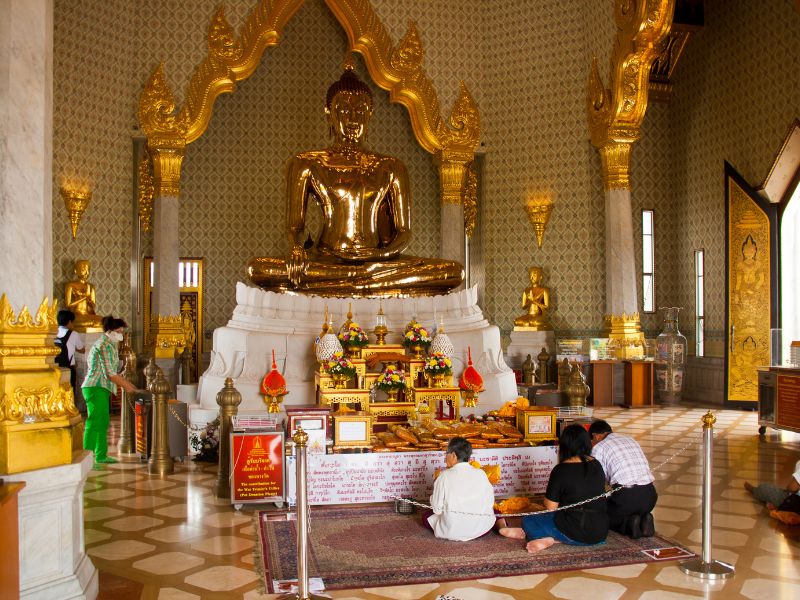
Things to see and eat around “Wat Traimit (Temple of Golden Buddha)
Yaowarat Chinatown Heritage Center
- Location: Adjacent to Wat Traimit, this center is at 661 Charoen Krung Rd, Talat Noi, Samphanthawong, Bangkok 10100.
- Description: The Yaowarat Chinatown Heritage Center immerses visitors in the rich history of Bangkok’s bustling Chinatown. Multimedia exhibits vividly depict the area’s vibrant streets, cultural traditions, and the resilient spirit of its residents. From early migrations to present-day life, you’ll gain insights into the evolution of this dynamic neighborhood.
- Business Hours: Open daily from 8:00 am to 5:00 pm.
- Location Description: The center is conveniently located near Wat Traimit, making it an ideal starting point for your exploration of Chinatown’s heritage
Street Food Delights in Yaowarat
- Location: The bustling streets of Yaowarat (Chinatown).
- Description: As you wander through the vibrant alleys, treat your taste buds to an array of delectable street food. From savory pad Thai and crispy fried spring rolls to succulent barbecue skewers and fragrant mango sticky rice, Yaowarat offers a feast for food enthusiasts. Don’t miss the famous Hainanese chicken rice or the tantalizing dim sum served at local eateries.
- Business Hours: Street food stalls operate throughout the day and well into the evening.
- Location Description: Yaowarat’s food stalls line the streets, creating an enticing culinary trail just steps away from Wat Traimit
Talat Noi Art Community
- Location: Within walking distance from Wat Traimit.
- Description: Explore the hidden gem of Talat Noi, an emerging art district. This historic neighborhood has transformed into a haven for creativity, with colorful murals, street art, and quirky galleries. Stroll along the narrow lanes, discover unique sculptures, and interact with local artists. Talat Noi’s blend of tradition and contemporary art makes it a captivating destination.
- Business Hours: Art studios and galleries may have varying hours; check in advance.
- Location Description: Talat Noi lies adjacent to Chinatown, offering an artistic contrast to the temple’s golden splendor
Chinatown’s Night Market
- Location: Yaowarat Road, Chinatown.
- Description: As the sun sets, Yaowarat Road transforms into a lively night market. Explore stalls selling everything from souvenirs and clothing to antiques and jewelry. Sample exotic fruits, sip on refreshing Thai iced tea, and indulge in fried bananas or sweet sesame balls. The vibrant atmosphere, neon lights, and bustling crowds create an unforgettable experience.
- Business Hours: Typically starts around 6:00 pm and continues late into the night.
- Location Description: Yaowarat Road runs through the heart of Chinatown, intersecting with the temple area
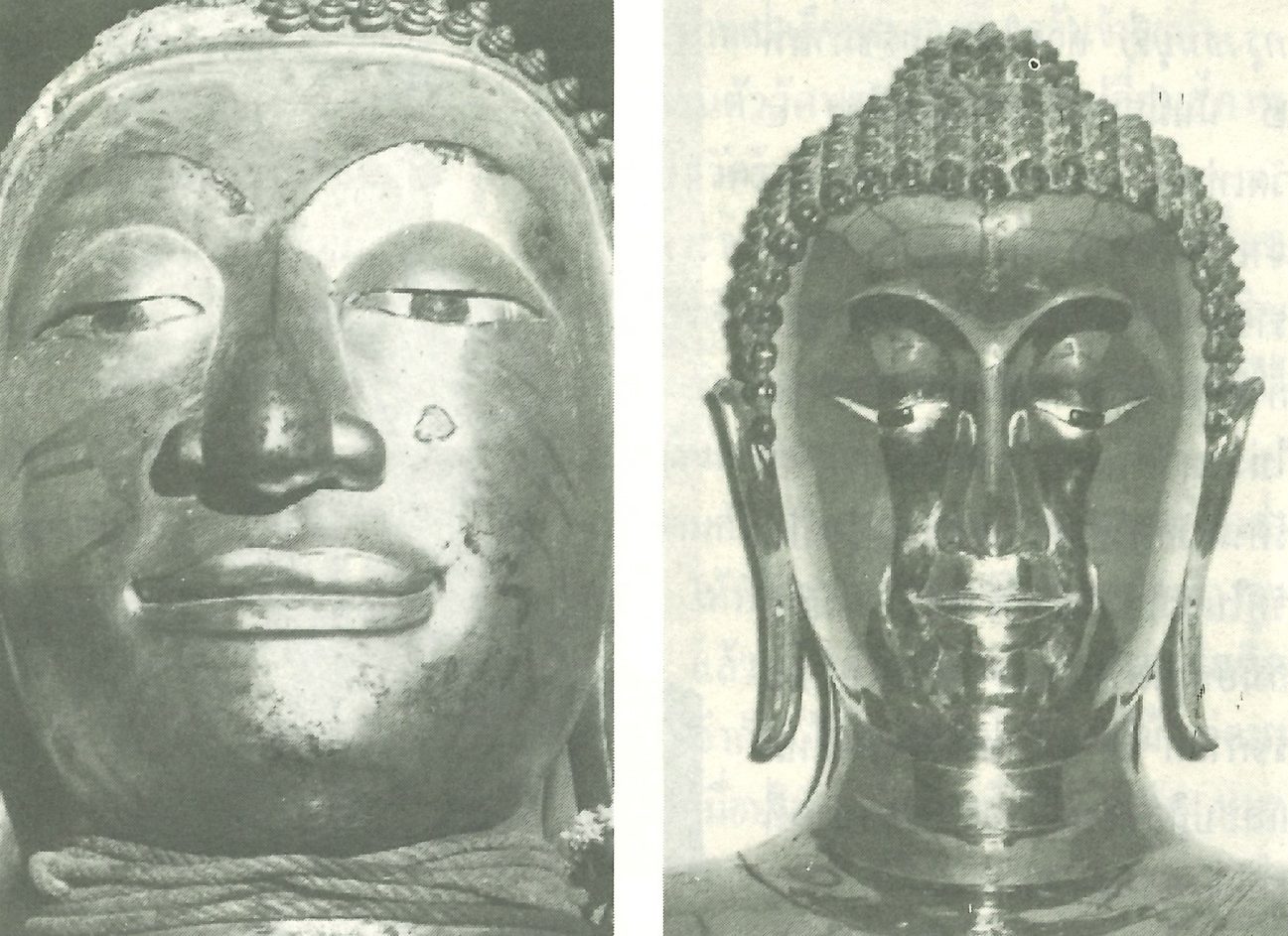

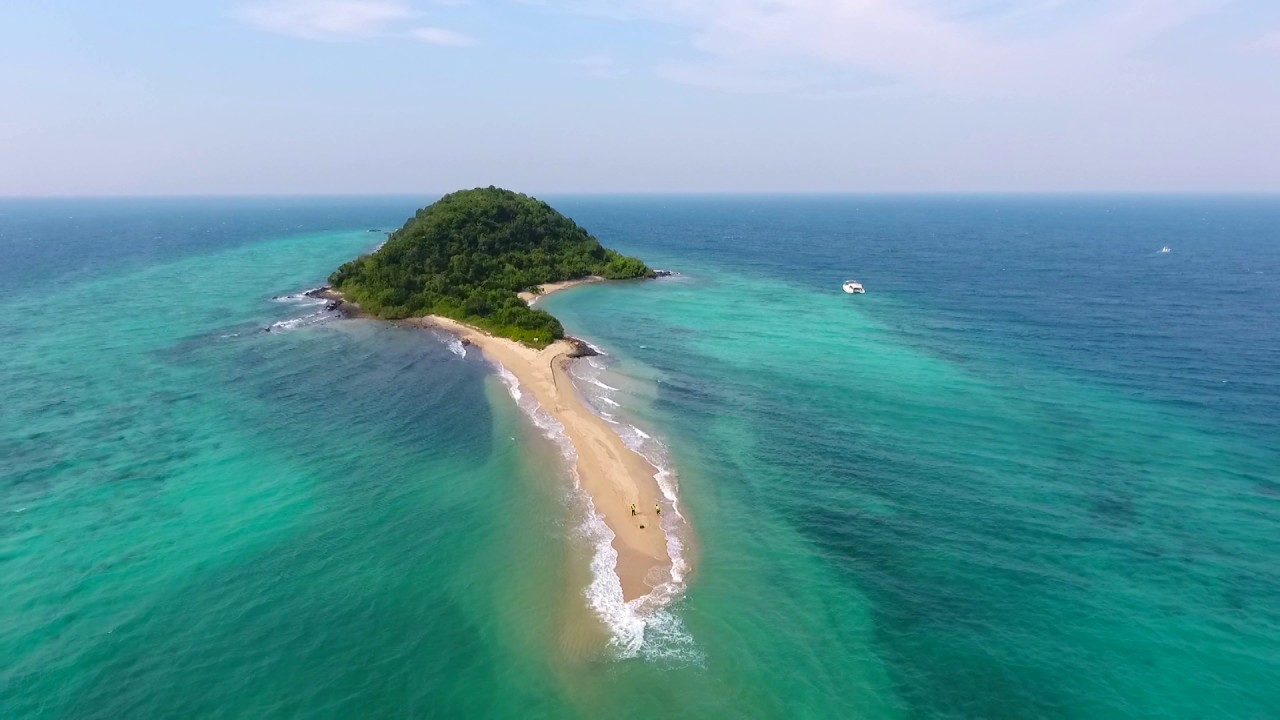

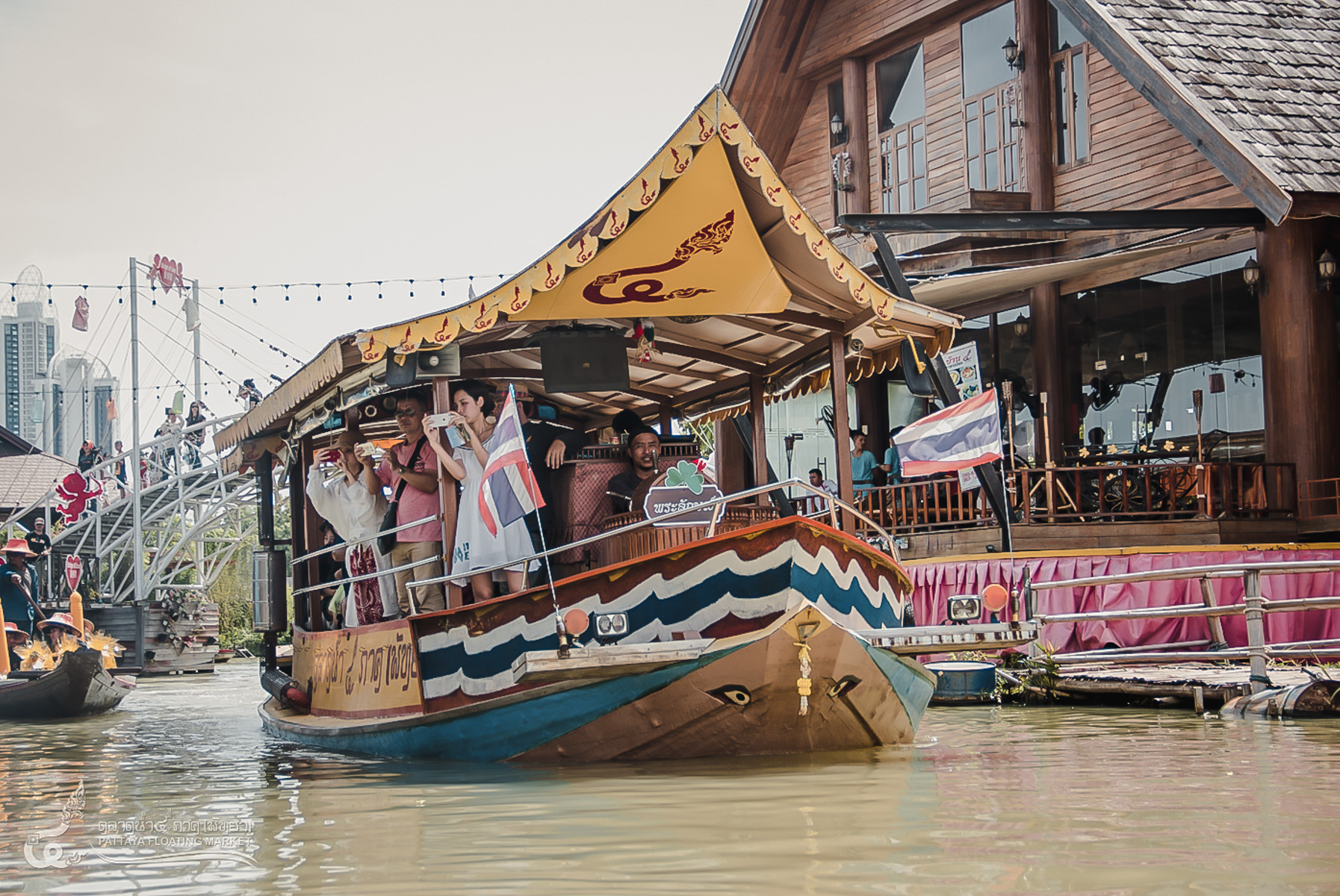

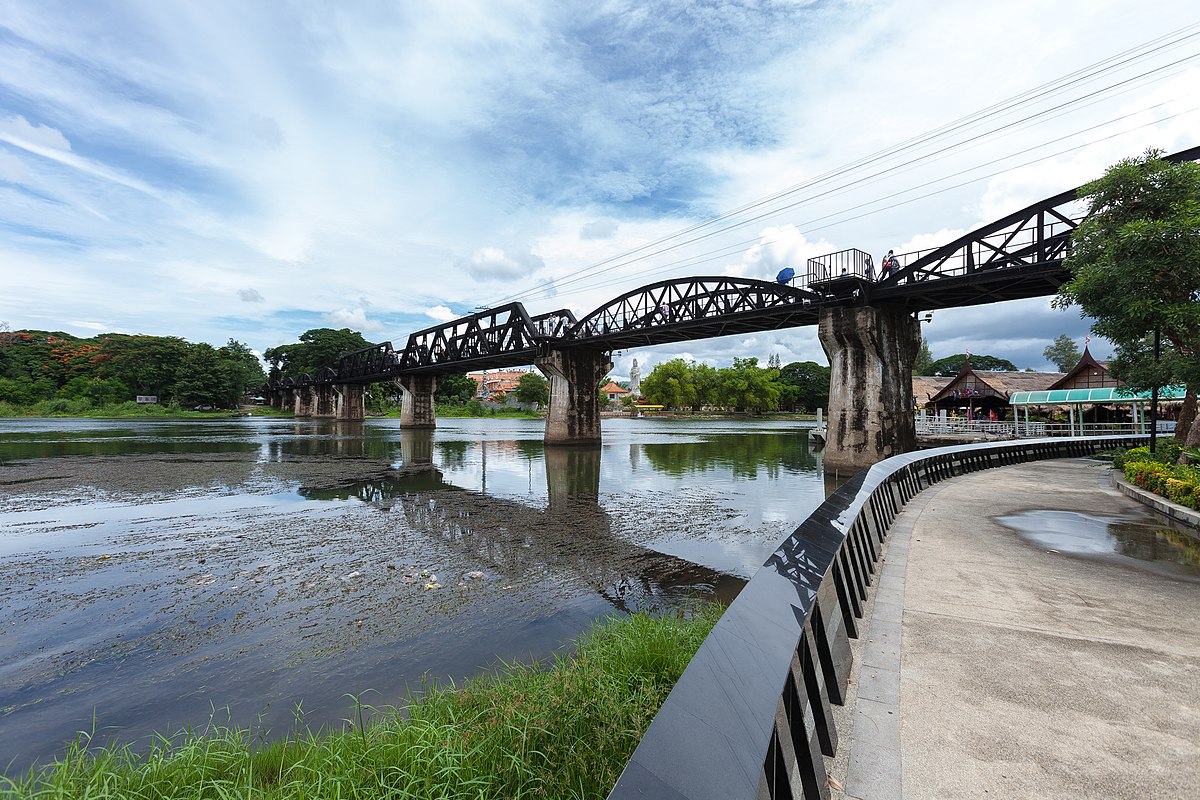
1 Comment. Leave new
I enjoy what you guys tend to be up too. This sort of clever work and coverage!
Keep up the greatt works guys I’ve added youu guys
to my blogroll. https://Yv6Bg.mssg.me/